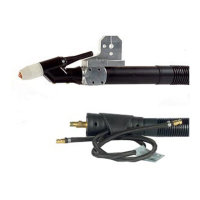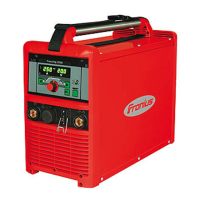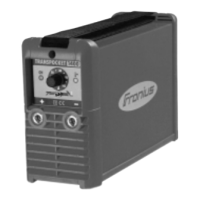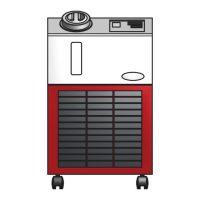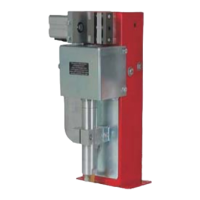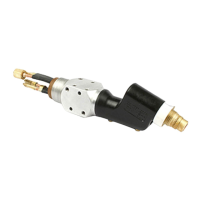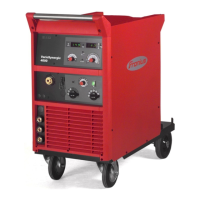35
Poor welding properties
Cause: Incorrect welding parameters
Remedy: Check the settings
Cause: Poor connection to earth (ground)
Remedy: Ensure good contact to workpiece
The welding torch becomes very hot
Cause: The design dimensions of the torch are not sufficient for this task
Remedy: Respect the duty cycle and loading limits
Cause: Only on water-cooled machines: Water through-flow is insufficient
Remedy: Check the coolant level, through-flow rate, cleanliness of coolant, arrangement of hose-
pack, etc. If the coolant pump is blocked: Use a screwdriver - placed on the bushing - to
turn the shaft of the coolant pump.
Weld-seam porosity
Cause: Spatter accumulating in the gas nozzle, causing inadequate gas-shielding of the weld-
seam
Remedy: Remove the welding spatter
Cause: Either the shielding-gas hose has holes in it, or it is not connected up properly
Remedy: Change the shielding gas-hose
Cause: The O-ring seals on the connection points are cut or defective
Remedy: Change the O-ring seals
Cause: Moisture / condensate in the shielding-gas hose
Remedy: Dry the shielding-gas hose
Cause: Shielding-gas flow is either too high or too low
Remedy: Correct the shielding-gas flow
Cause: Insufficient shielding-gas flow at the beginning or end of welding
Remedy: Increase the gas pre-flow or post-flow
Cause: Only on welding torches with external wire feeding: The welding wire is rusty or of poor
quality
Remedy: Use only high-quality wires that are free of contaminants
Cause: Too much parting agent applied
Remedy: Wipe off excess parting agent / apply less parting agent
Poor ignition properties
Cause: Unsuitable tungsten electrode (e.g. WP electrode for DC welding)
Remedy: Use suitable tungsten electrode
Cause: Loose clamping nuts, gas lens or clamping sleeve
Remedy: Tighten clamping nuts, gas lens or clamping sleeve
Cracks in gas nozzle
Cause: Electrode does not protrude far enough out of gas nozzle
Remedy: Allow electrode to protrude further out of gas nozzle
